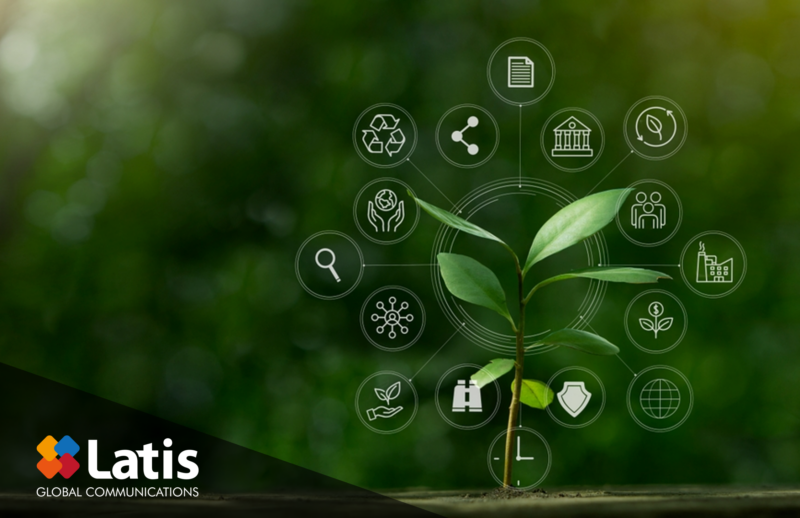
For years, prioritizing customer experience has been a consistent concern for businesses. As we approach 2024, it’s becoming increasingly important to anticipate the potential developments that will shape the customer experience landscape. Given the rapid advancements in technology, changes in consumer behavior, and evolving expectations, it’s imperative for businesses to be proactive and adapt to stay ahead of the competition.

What can we expect from customer experience (CX) in 2024?
The landscape of customer experience in 2024 is poised for a transformative journey as companies embrace cutting-edge technology and a deep understanding of consumer needs to redefine how they engage, satisfy, and retain customers.
In recent years, the business landscape has undergone profound changes, reshaping the nature of how companies operate and succeed in the modern marketplace. One of the key transitions that has emerged during this time of change is the exponential growth in the importance of customer experience. As they adapt to changing consumer behaviors, preferences, and expectations, companies have come to realize that the quality of the customer experience is no longer just a differentiator, but the most important factor in determining success.
This new emphasis on customer experience has been fueled by a number of interrelated factors. Rapid advances in technology, the proliferation of online and digital channels, and the increasing connectivity of a globalized world have created a customer base that is more informed, discerning, and empowered than ever before. In this age of instant communication and information sharing, customers have unprecedented influence over a brand’s reputation and position in the marketplace.
Furthermore, the COVID-19 pandemic has accelerated the adoption of digital solutions and changed the way businesses engage with their customers. The shift to remote work, online shopping, and digital communication channels has forced organizations to reevaluate their customer engagement strategies and place greater importance on digital touchpoints and the overall virtual experience.

The combination of these factors is causing companies to reevaluate and elevate their efforts towards a customer-centered experience. No longer confined to a single department or sporadic marketing campaigns, customer experience has evolved into an inclusive ethos that permeates every aspect of an organization. Today, businesses must harness the power of data analytics, artificial intelligence, and personalized interactions to create seamless, meaningful, and consistent experiences that resonate with their diverse audiences.
In this context, the emergence of customer experience as a strategic imperative is not simply a trend, but a fundamental shift that can determine the fate of a business. The deeper we dig into this era of change, the clearer it becomes that success depends on a firm belief in understanding, anticipating, and exceeding customer expectations.
As we approach 2024, the imperative to build truly seamless, personalized, predictable, and proactive customer experiences is more pressing than ever. Businesses should strive to improve the CX they provide to their customers.
Overall, the importance of customer experience has reached new heights, and companies that put it at the forefront of their strategy are more likely to succeed. In 2024, customer experience is expected to change even further, driven by continued technological advancements, evolving customer preferences, and emerging trends.
With these considerations in mind, let’s take a look at the top 8 customer experience strategies that will be trending in 2024.
8 Customer Experience Trends to Watch in 2024
1. Hyper-personalization
Imagine a shopping experience where everything is seamlessly tailored to your tastes and needs, as if the entire store or service was designed just for you. That ‘s the essence of personalization.
Personalization has long been a buzzword in the realm of customer experience. But as we approach 2024, personalization shifts to being indispensable for businesses that want to stay ahead of the competition. In fact, it has become one of the major trends for customer experience in the present and near future.

As abundant customer data becomes more accessible, companies need to leverage this information to create experiences that are tailored to individual tastes and behaviors. These advances encompass a range of possibilities, including personalized product recommendations, tailored marketing communications, and one-on-one customer service interactions. As awareness of data privacy issues grows, striking a delicate balance between personalization and customer privacy will be a key challenge.
In the near future, companies will leverage data-driven insights to provide personalized recommendations and exclusive deals based on a customer’s previous interactions with the brand. The integration of artificial intelligence and machine learning supports businesses in providing personalized experiences to enhance customer satisfaction and drive long-term customer retention.
2. The rise of voice interactions
The trend toward voice-driven interfaces, represented by Amazon’s Alexa, Google Assistant, and others, is not just limited to the home, but is expected to expand into the enterprise by 2024. Customers will increasingly engage with businesses through voice commands, whether it’s placing an order, requesting support, or searching for information. In fact, voice assistants are actively shaping consumer behavior, laying the groundwork for times to change.

With this transition imminent, companies will need to make significant investments in voice-enabled technologies and content optimization for voice-based search. This change also requires a fundamental rethinking of how companies approach interactions with customers, with a focus on enhancing voice-based experiences over traditional text-based exchanges.
Voice-enabled technology continues to evolve and is expected to continue to grow over the next few years. In 2024, businesses will combine voice-enabled technologies powered by machine learning with the enhanced capabilities of call centers to deliver more convenient and personalized customer experiences.
5. Focus on the customer journey
The concept of prioritizing “relationships” over simple “transactions” is becoming commonplace in the realm of customer experience. Similarly, there is an emphasis on focusing on the customer journey rather than isolated interactions. Despite this widespread desire, no real progress has been made to date. The customer journey is often left disconnected and inefficient, placing an unfair burden on customers and hindering brands’ ability to understand sentiment, predict intent, or personalize conversations.

The key to this challenge is versatility, ensuring that you have the tools to respond to changing customer needs and continually fine-tune the journey to make it progressively less frustrating and more relevant and valuable to the individual.
4. The convergence of virtual and augmented reality: Improved customer engagement
Augmented reality (AR) has already left an indelible mark on gaming and entertainment, and now its transformative potential is extending to enhancing customer experiences across a wide range of industries.
By 2024, we expect to see a surge in companies harnessing the power of AR to create immersive experiences that fundamentally change the way customers interact with a company’s products and services. AR offers the possibility for customers to try things out, visualize products in their surroundings, and engage with products in new and exciting ways. These applications can include virtual try-ons of fashion and cosmetics, immersive real estate tours, dynamic virtual product demonstrations, and more. Widespread adoption of AR will entail investing in advanced technology and creating content tailored to these new experiences.

By adopting AR, businesses can not only increase customer engagement, but also carve out a unique and innovative niche that sets them apart from their competitors. In 2024, AR will act as a catalyst to increase customer satisfaction and deliver unique and unforgettable customer journeys.
5. Omnichannel harmonization: Important customer experience trends
In an environment where the interactions between customers and businesses are constantly changing, serving customers across multiple touchpoints has become a business imperative. The concept of omnichannel experiences is gaining traction, calling for the seamless integration of all customer interaction channels. Customers now expect the freedom to engage with businesses in the way they prefer – offline, online, on social media, or over the phone.
Looking ahead to 2024, omnichannel experiences will be the defining trend in customer interactions. To achieve this, companies need to build a unified identity while maintaining consistent branding, messaging, and service quality across all channels. This will also entail investing in cutting-edge technology that enables companies to seamlessly track and analyze their interactions with customers across channels and deliver personalized experiences based on that data.

Companies that fail to deliver a fluid omnichannel experience subsequently risk losing their customer base to competitors who have embraced this paradigm. The importance of an omnichannel experience goes beyond simply offering multiple channels; it’s about delivering a consistent, personalized experience across all customer touchpoints.
Customers now demand the ability to start an interaction in one channel and seamlessly switch to another without overlap or disruption. In this day and age, an omnichannel experience is no longer a luxury, but a requirement for companies that want to succeed in 2024 and beyond.
6. AI and machine learning-powered customer service
Artificial intelligence (AI) and machine learning (ML) have moved beyond the realm of mere buzzwords and are firmly established as essential components of modern customer service strategies.
As we move into 2024, we expect to see a surge in the adoption of AI-powered chatbots and automated messaging solutions. These AI-powered tools can dramatically increase the efficiency of your customer service operations by quickly handling customer inquiries, managing repetitive tasks, and providing round-the-clock support. Machine learning plays a pivotal role in improving these interactions, enabling chat bots to gain insights from past history and progressively customize their responses to deliver a more personalized and effective customer experience.

Media theorist Marshall McLuhan once said that a fish will never notice water. Similarly, it’s likely that AI will “disappear” at some point. This doesn’t mean that the technology will disappear. AI will become “invisible” in the sense that it will become more commonplace than it is now, moving from the enterprise to the individual and becoming pervasive in infrastructure.
7. Proactive customer engagement takes center stage
A powerful trend gaining momentum recently involves the shift from reactive to proactive customer service. Instead of waiting for customers to report issues first, organizations are using social listening tools to monitor customer feedback, concerns, and positive or negative trends across various social platforms. With this shift, businesses will have the ability to anticipate potential issues and take proactive steps to resolve them before they escalate. The result is a more efficient resolution process and a better overall customer experience that reflects a proactive commitment to customer satisfaction.
In addition to these trends, companies are finding innovative ways to mobilize AI and ML into different aspects of their operations to streamline processes, gain deeper insights, and improve the overall customer journey.
8. Sustainability: Enhance social and environmental responsibility
In an era of increasing awareness of social and environmental issues, customers are increasingly inclined to engage with socially responsible companies. As we enter 2024, organizations that can demonstrate a strong commitment to social and environmental responsibility will have a competitive advantage.

Sustainability will evolve into an important factor influencing customer choice in the future. More and more people are considering the environmental impact of their consumption decisions. Therefore, companies need to embark on a conscientious journey toward sustainability and create customer experiences that reflect this commitment.
These challenges can include sustainable packaging solutions, carbon-neutral shipping alternatives, and production lines using eco-friendly materials. In essence, customers will expect companies to minimize waste, adopt sustainable materials, and be socially responsible. Companies that prioritize sustainability not only set themselves apart from their competitors, but also resonate with a customer base that actively seeks to make environmentally conscious choices. In 2024, cultivating sustainable practices will be a powerful means of differentiation and a way to attract customers who are committed to driving positive change in the world.
Final Thoughts
As we approach 2024, it’s time to put changing customer preferences at the forefront of business strategy. As the customer experience landscape changes, you need to be adaptable and innovative for sustainable growth. To gain a competitive advantage in the customer experience space, organizations must begin to rethink customer experience with a focus on innovation, convenience, and engagement. If you have more questions about managing a game, please contact us at contact@latisglobal.com. Let’s give your game wings.

